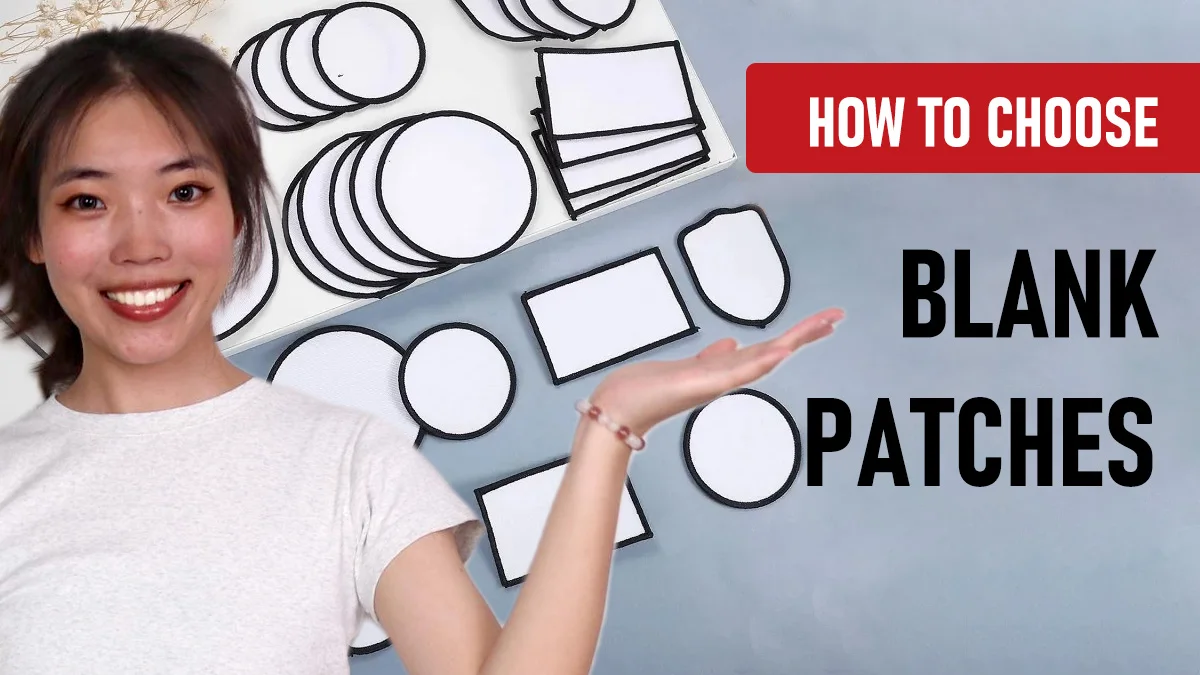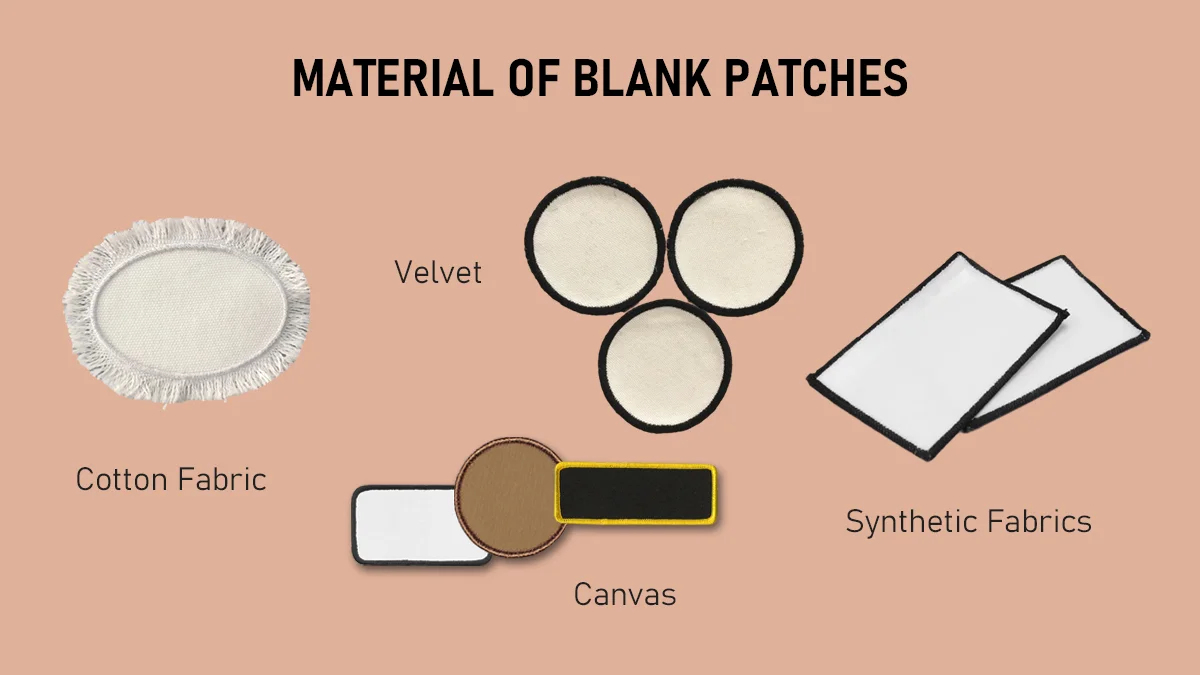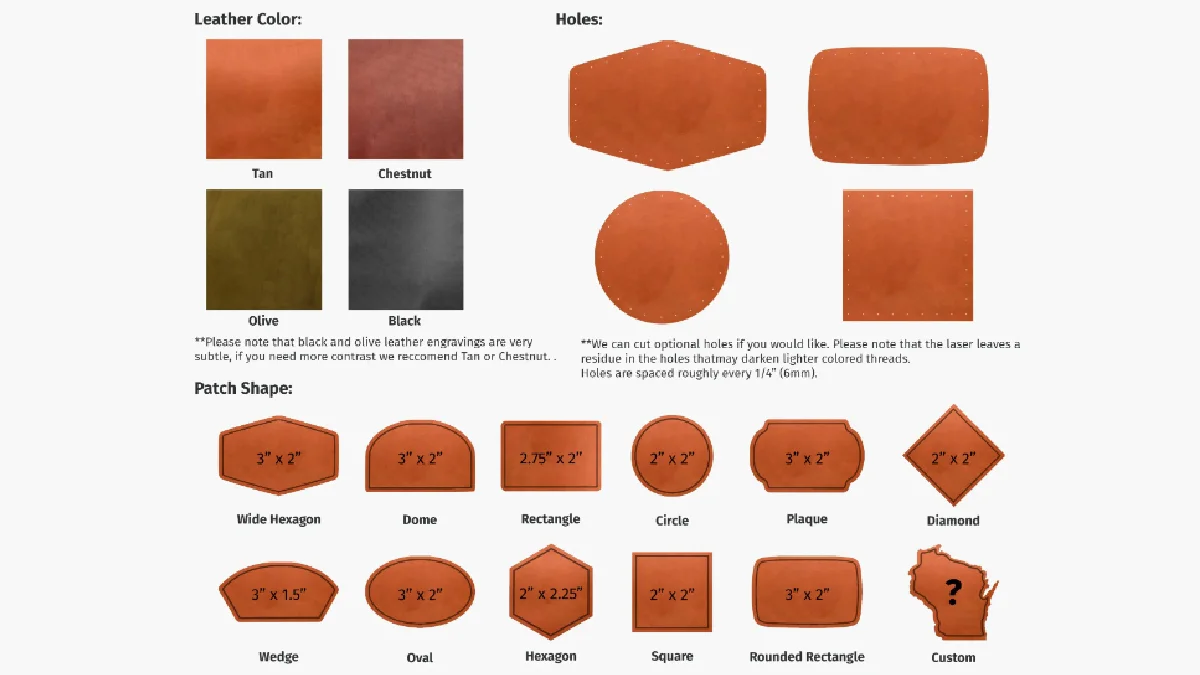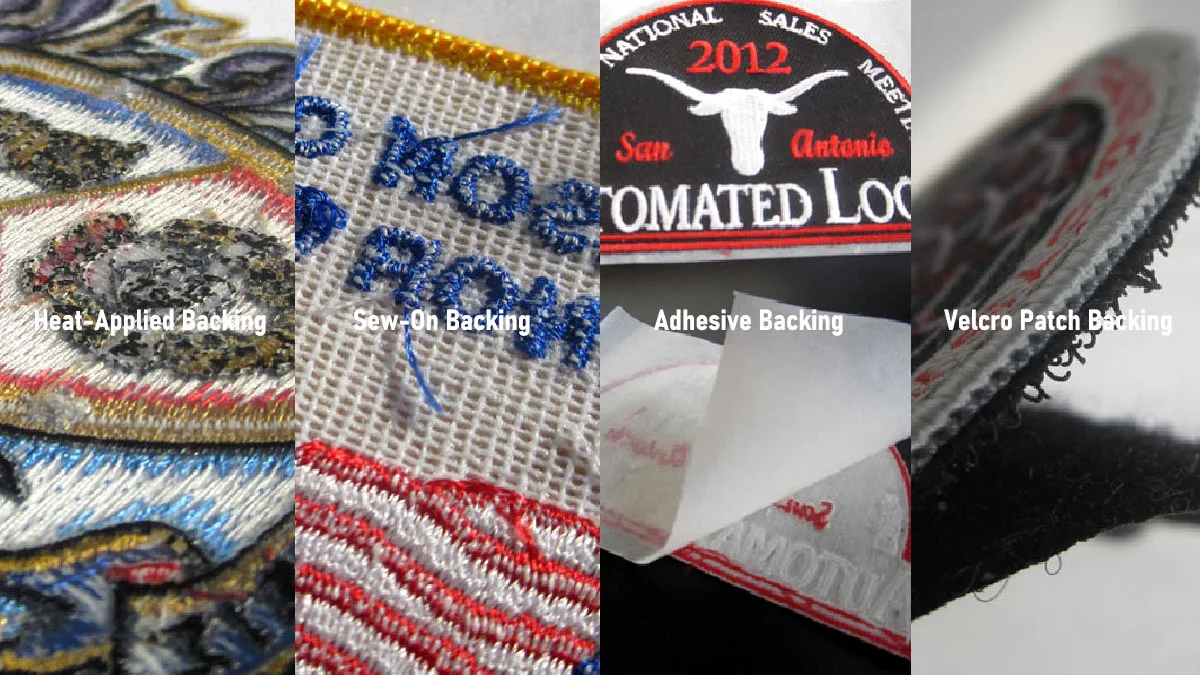
How to effectively reduce vibration and noise during embroidery?
2024-04-24
Pattern 950030
2024-04-29BUSINESS TIPS
How to choose blank patches?
POSTED ON APRIL 27th,2024 BY BAi

For embroidery beginners, choosing between custom or blank patches can be a challenging decision. Custom patches mean that you need to design and make the patch from the scratch like designing the size, shape, etc, they may require more time and effort, it will be challenging for beginners. In contrast, blank patches are patches with pre-made sizes, shapes, etc., but no patterns on them, allowing you to directly embroider them without spending much time on designing and creating the patches.
This blog will cover the following aspects to help you choose the right blank patches.
#1 Material of the blank patches
#2 Blank patches colors and sizes
#3 Backing options for the blank patches
#4 Where to purchase blank patches
#1 Material of blank patches
Blank patches for embroidery can be made from various materials. Here are some common materials.
Cotton Fabric: Cotton fabric is one of the most common materials used for blank patches. It is soft, comfortable, easy to embroider, and has good breathability. Cotton fabric is also readily available and relatively affordable. However, cotton fabric may shrink or deform and requires special attention during washing and maintenance.
Canvas: Canvas is a sturdy and durable fabric often used for making blank patches. It has a high density, providing better stability and durability. Canvas is also suitable for dense embroidery patterns as it can withstand higher thread density. However, canvas is relatively coarse and may not be suitable for delicate and intricate embroidery designs.
Velvet: Velvet is a soft fabric with a plush texture, commonly used for embroidered patches. Its texture enhances the visual effect of embroidery, making it more rich and luxurious. However, velvet tends to attract dust and stains, and there may be issues with thread snagging during the embroidery process.
Synthetic Fabrics: Synthetic fibers such as nylon, polyester, etc., are also commonly used for making blank patches. They are durable, easy to clean, and wrinkle-resistant. Synthetic fabrics also offer more color options and luster, making embroidery designs more vibrant. However, synthetic fabrics may not be as comfortable as natural fibers and may cause discomfort on the skin.

When choosing the material for blank patches, you can consider the following factors:
- Embroidery Effect: Different materials of blank patches will present different effects and textures. For example, delicate and intricate embroidery designs may require soft and delicate materials, while bold and three-dimensional embroidery designs may require sturdy and stable materials.
- Application Scenario: Different materials may have different adaptability to different scenarios and items. For example, if you plan to apply embroidered patches to sportswear, you may need to choose lightweight and breathable materials. If you want to showcase embroidered patches on luxury items, you can choose materials with a noble texture.
- Material Characteristics: Different materials have different characteristics such as softness, luster, breathability, durability, etc. Consider the desired characteristics and choose materials that are suitable for the embroidery project. For example, if you need soft and comfortable patches, choose soft materials like cotton fabric or silk. If you need durable and stable patches, choose sturdy materials like canvas or felt.
- Budget: Different materials may have different prices, and budget is also an important factor in material selection. Consider your budget range and choose materials within your budget.
Most importantly, when choosing the material for blank patches, consider personal preferences and project requirements. You can weigh the above factors and choose the most suitable material according to your embroidery design style, budget and practical application.
#2 Blank Patch Colors and Sizes
The choice of color and size for blank patches can be determined based on personal preferences and project requirements. Here are some common options:

-1 Color
- White: White is the most common color for blank patches, suitable for most embroidery designs and can display vibrant embroidery thread colors.
- Black: Black blank patches can create a unique effect in some designs, especially when using brightly colored threads for embroidery.
- Neutral Colors: Colors like gray, beige, etc., can add a soft and modern touch to the embroidery design.
- Colored: In addition to traditional white and black, you can also choose other colored blank patches to match the design or highlight specific colors in the design.
-2 Size
The size of blank patches can be chosen based on project requirements and design dimensions. Generally, there are several common size options:
- Small: Typically ranging from 1-2 inches (2.5-5 centimeters), suitable for use on small items such as clothing, hats, and suitable for simpler embroidery designs.
- Medium: Typically ranging from 2-4 inches (5-10 centimeters), suitable for use on medium-sized items such as clothing, backpacks, and suitable for designs of moderate size.
- Large: Typically above 4 inches (10 centimeters), suitable for use on large items, home decor, etc., and suitable for larger or more complex designs.
When choosing the color and size of blank patches, there are some other considerations to keep in mind:
Colors
- Design Style: Consider the style and theme of your embroidery design and choose colors that match. For example, if your design features bright and vibrant colors, choosing white or light-colored blank patches can make the embroidery thread colors stand out. On the other hand, if your design leans towards darker tones or has a vintage style, black or dark-colored blank patches may be more suitable.
- Contrast: Consider the contrast between the embroidery thread and the blank patches. Choosing color combinations with higher contrast can make the embroidery design more eye-catching and clear. For example, if you're using bright-colored embroidery threads, choosing dark-colored blank patches can increase the contrast.
- Application Scenario: Consider the application scenario of the embroidery patches and the items they will be placed on. Choosing embroidery patch colors that harmonize with the item's color or style can enhance the overall aesthetic. For instance, if you're using the patches on dark-colored garments, choosing light-colored blank patches can make the embroidery design more prominent.
Size
- Design Complexity: Consider the complexity and level of detail in your embroidery design. If the design has many intricate details, choosing larger-sized blank patches can better showcase the intricacy and finesse of the design.
- Item Size: Consider the size of the item where the patches will be placed. Choosing patch sizes that are proportionate to the item can create a more balanced and harmonious overall appearance.
- Visibility: Consider the visibility and purpose of the patches. If you want the patches to be attention-grabbing, choosing larger-sized patches can better attract attention.
#3 Backing options for blank patches
Backing for blank patches is a layer of material that is attached to the back of a patch to enhance the stability of the patch and maintain its shape. Here are some common options for backing on blank patches:
- Iron-On Backing:Iron on backings is a type of backing that forms a connection between the patch and the cloth when heated or ironed. Contrary to popular belief, these patches cannot be affixed using a standard household iron. Instead, they require the appropriate amount of time, pressure, and temperature to seal correctly.
- Sew-On Backing: Sew-on backing involves attaching the backing to the patch by stitching. This backing can be made of fabric or non-fabric materials such as cotton, canvas, or synthetic fibers. Sew-on backing is suitable for various types of embroidery patches, especially those that require more flexibility and pliability.
- Adhesive Backing: Adhesive backing uses a back adhesive to bond the backing to the patch. This type of backing provides a quick and convenient way of attachment without the need for stitching. Adhesive backing is typically suitable for flat embroidery patches, but may not be suitable for patches that require greater stability and durability in certain cases.
- Velcro Patch Backing: Velcro backing refers to the type of backing used on patches to secure them to clothing or other surfaces using Velcro fasteners. It consists of two parts: a hook and a loop. The backing of a Velcro patch usually consists of a hook sewn on one side and a loop sewn on the other.

When choosing backing for blank patches, you can consider the following factors:
- Embroidery project requirements: Consider the type and scale of your embroidery project. For large-scale embroidery designs, you may need to choose backing materials that provide better support and stability, such as heat-applied backing. For delicate embroidery designs, you may need to choose soft and thin backing materials, such as backing paper.
- Fabric type: Consider the type of fabric you will be embroidering on. Different fabrics may require different types of backing materials to achieve the best results. For example, soft fabrics may require soft and thin backing materials, while heavy fabrics may require backing materials that provide better support.
- Complexity of the embroidery design: Consider the complexity and level of detail in your embroidery design. If the design involves many stitches and intricate details, you may need to choose backing materials that can cover the back of the stitches and provide better stability, such as heat-applied backing or mesh backing.
- Intended use and environment: Consider the environment and purpose of your embroidery work. If the embroidery will be used on garments, you may need to choose backing materials that provide sufficient stability and durability. If the embroidery will be used for home decor or other purposes, you can choose the appropriate backing materials based on your needs.
- Personal preferences and skill level: Consider your personal preferences and embroidery skill level. Different backing materials may require different techniques and methods. Choose backing materials that are suitable for your skill level and preferences to achieve the best embroidery results.
#4 Where to purchase blank patches
The most common channels for purchasing blank patches are online shopping websites and offline stores. For offline purchases, you can choose local craft stores or embroidery supply shops. For online purchases, you can search for keywords such as "embroidery patches" or "blank patches" to browse various patch styles and make a suitable purchase.
Here are some popular websites for purchasing blank patches:
Amazon (www.amazon.com)
- Pros: Offers a wide range of embroidery blank patches, including multiple brands and price ranges. Provides buyer reviews and detailed product descriptions for reference. Reliable logistics and customer service support.
- Cons: There is a risk of counterfeit products. Additional customs duties and shipping fees may be required. Shopping experience may vary depending on the seller.
Etsy (www.etsy.com)
- Pros: Offers unique and handmade embroidery blank patches, including works from independent designers and artisans. Personalization options and custom services are available.
- Cons: Prices may be higher as the products are handmade. Quality and service may vary depending on the seller. It is important to carefully evaluate seller reviews and store policies.
eBay (www.ebay.com)
- Pros: Offers a diverse selection of embroidery blank patches, including new and used products. Some unique and hard-to-find styles can be found.
- Cons: Quality and service may vary depending on the seller. It is important to pay attention to seller reviews and store policies.
These websites provide convenient shopping platforms where you can search and browse blank patches offered by different suppliers. When choosing a website and supplier, it is important to carefully read product descriptions, user reviews, and store policies to ensure that you select suitable blank patches and have a good shopping experience.
Through this article, I believe you have gained some understanding of blank patches. Choosing the right embroidery blank patches is a key step in showcasing your personality and creating unique artwork. Now, let's start exploring the world of embroidery blank patches!
-1.png)

